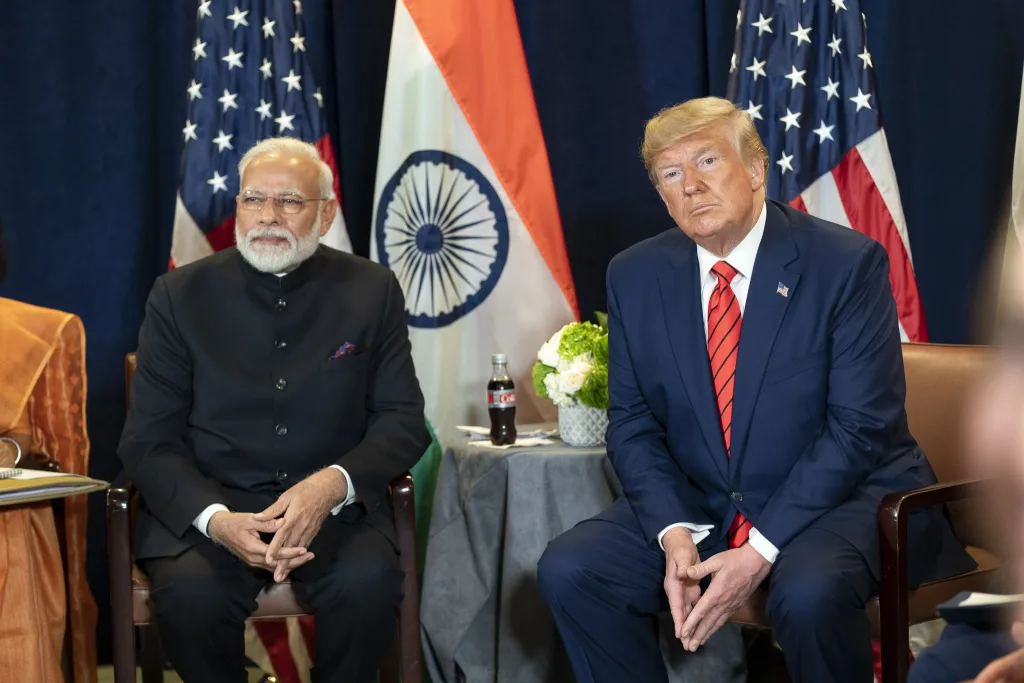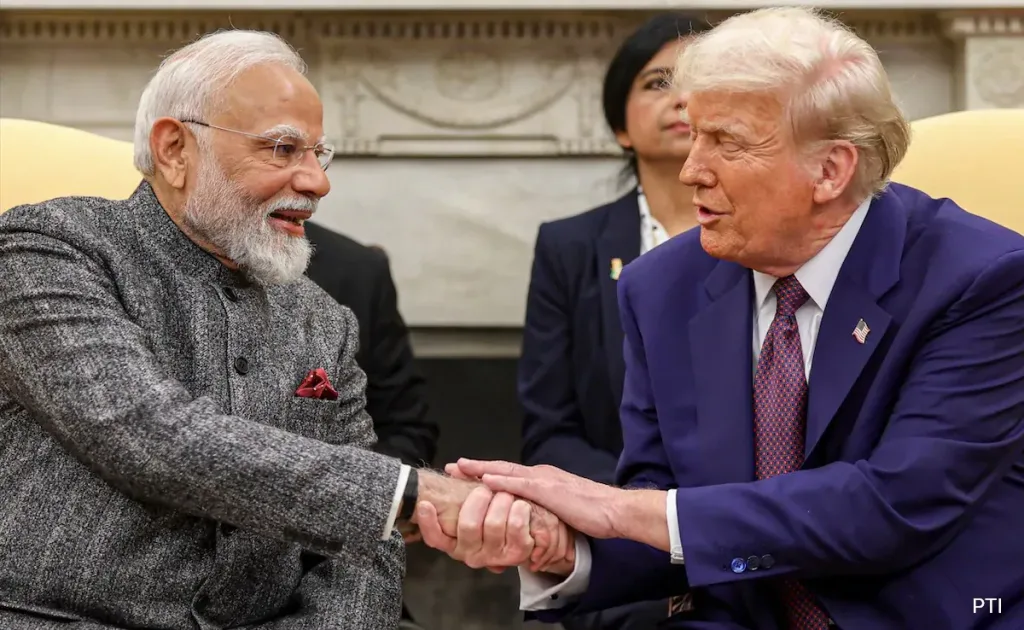In what could mark a turning point in economic relations between the world’s largest and fifth-largest economies, India is preparing to significantly reduce tariffs on more than half of US imports. This strategic move, affecting goods worth approximately $23 billion, comes as part of the first phase of a comprehensive trade deal between the two nations.
As tensions rise with the looming April 2 deadline for potential US reciprocal tariffs, the Indian government has accelerated negotiations to protect its crucial export market. The stakes couldn’t be higher – India’s exports to the US, valued at a staggering $66 billion, hang in the balance.
Table of Contents
What the India US Trade Deal Means for Both Economies
The India US trade deal represents a significant shift in bilateral economic relations. According to sources close to the negotiations, India is considering tariff reductions on approximately 55% of current US imports. This move is primarily defensive, aimed at preventing the implementation of reciprocal tariffs by the United States that could severely impact Indian exports.
“This is essentially a strategic calculation,” explains Dr. Rajiv Mehta, an international trade expert at Delhi School of Economics. “By offering these concessions now, India hopes to safeguard its much larger export market to the US. It’s a classic case of giving up something smaller to protect something bigger.”
The proposed trade agreement comes after months of behind-the-scenes negotiations between officials from both countries. The Indian government aims to protect its $66 billion export market to the US through this proactive measure, while also potentially opening new opportunities for bilateral trade.

How US Imports Worth $23 Billion Will Benefit from New Trade Deal
US imports affected by this deal include a wide range of products, from technology to agricultural goods. The current US India tariffs structure has been a point of contention between the two nations for years, with American businesses frequently complaining about high import duties on their products entering the Indian market.
Under the proposed changes, several key product categories could see significant reductions in import duties:
- Almonds and pistachios
- Oatmeal and quinoa
- Select technology products
- Certain industrial goods
However, the Indian negotiators have drawn clear boundaries. The tariff on imports from the US could be reduced for over half of the current import categories, but certain sensitive sectors remain protected. India has explicitly excluded meat, maize, wheat, and dairy products from tariff reductions, citing domestic agricultural concerns.
For the automobile sector, which has traditionally faced high import duties in India, a gradual reduction approach is being considered rather than immediate cuts.
Strategic Reduction in Tariff on Imports: India’s Bold Move
The proposed tariff reduction is one of the most significant trade moves by India in recent years. What makes this particularly noteworthy is the timing – coming just days before the April 2 deadline when the US is set to implement reciprocal tariffs under Section 301 of the US Trade Act.
“India is essentially racing against the clock,” notes Priya Sharma, a senior trade analyst at a leading economic think tank. “If they can finalize this deal before April 2, they potentially save their exporters from facing significant barriers in the US market.”
The impact on India Bazaar could be substantial as imported US goods become more affordable. For Indian consumers, this could mean access to certain American products at lower prices, potentially increasing competition in the domestic market and offering more choices.
Indian Government’s Strategy Behind the Proposed Cuts
Prime Minister India Modi has personally overseen aspects of this strategic trade negotiation, underscoring the importance his administration places on US-India economic relations. The Indian Government’s approach reflects a pragmatic recognition of global trade realities and the importance of maintaining strong ties with the world’s largest economy.
News India sources confirm that negotiations are in the final stages for this landmark deal. The strategy appears to be multifaceted:
- Protect the vital export market to the US
- Prevent the implementation of reciprocal tariffs
- Strengthen bilateral economic relations
- Position India favorably in the global trade landscape
- Maintain protection for sensitive domestic sectors
Current India tariff rates on US goods are set to change dramatically under the new proposal. However, the government has been careful to balance international trade commitments with domestic economic concerns, particularly in sectors with significant employment or food security implications.

US India Trade Relations: A New Chapter Begins
Experts believe US-India trade relations will enter a new phase of cooperation following this agreement. The strengthening of India-US economic ties could have far-reaching implications for global trade patterns, potentially influencing how other emerging economies approach trade negotiations with developed nations.
“What we’re seeing is a maturing of the US-India economic relationship,” explains Dr. Mehta. “Both sides recognize the mutual benefits of increased trade and are willing to make compromises to achieve that goal.”
The proposed India-US trade agreement could serve as a template for future deals with other countries. It demonstrates India’s willingness to engage in strategic trade liberalization while still protecting key domestic interests.
Understanding India Tariffs on US Imports: Before and After
The reduction in India tariffs on US imports aims to prevent retaliatory measures from Washington. To understand the significance of these changes, it’s helpful to compare the current situation with what’s being proposed:
Before the Deal:
- High tariffs on many US goods
- Limited market access for certain US products
- Ongoing trade tensions and threats of reciprocal tariffs
- Uncertainty for Indian exporters to the US market
After the Proposed Deal:
- Reduced tariffs on more than half of US imports
- Improved market access for many US products
- Potential prevention of US reciprocal tariffs
- Greater certainty for Indian exporters
The India US tariff negotiations have been ongoing for several months behind the scenes, with both sides working to find a mutually acceptable compromise. This deal, if finalized, would represent a significant diplomatic achievement for both countries.
Key Elements of the India-US Trade Agreement Explained
The first phase of this trade agreement focuses primarily on tariff reductions, but sources suggest future phases could address other trade barriers, intellectual property rights, and market access issues.
For Indian businesses that import American goods, this deal could significantly reduce costs and open new opportunities. Similarly, US exporters may find the Indian market more accessible and profitable under the new tariff structure.
For consumers in both countries, the deal could eventually translate to more choices and potentially lower prices for certain goods. However, the full impact will depend on how businesses respond to the new trade environment and whether cost savings are passed on to consumers.
What Happens Next?
As the April 2 deadline approaches, negotiators from both countries are working intensively to finalize the details of this agreement. The coming days will be crucial in determining whether this deal moves forward and what specific tariff reductions will be implemented.
What’s clear is that this represents a pivotal moment in US-India economic relations. The outcome of these negotiations will shape bilateral trade for years to come and could have significant implications for the global trading system.
For businesses and consumers in both countries, staying informed about these developments will be essential for understanding the changing economic landscape and identifying new opportunities that may arise from this historic trade agreement.
This article will be updated as new information becomes available about the India-US trade negotiations.







